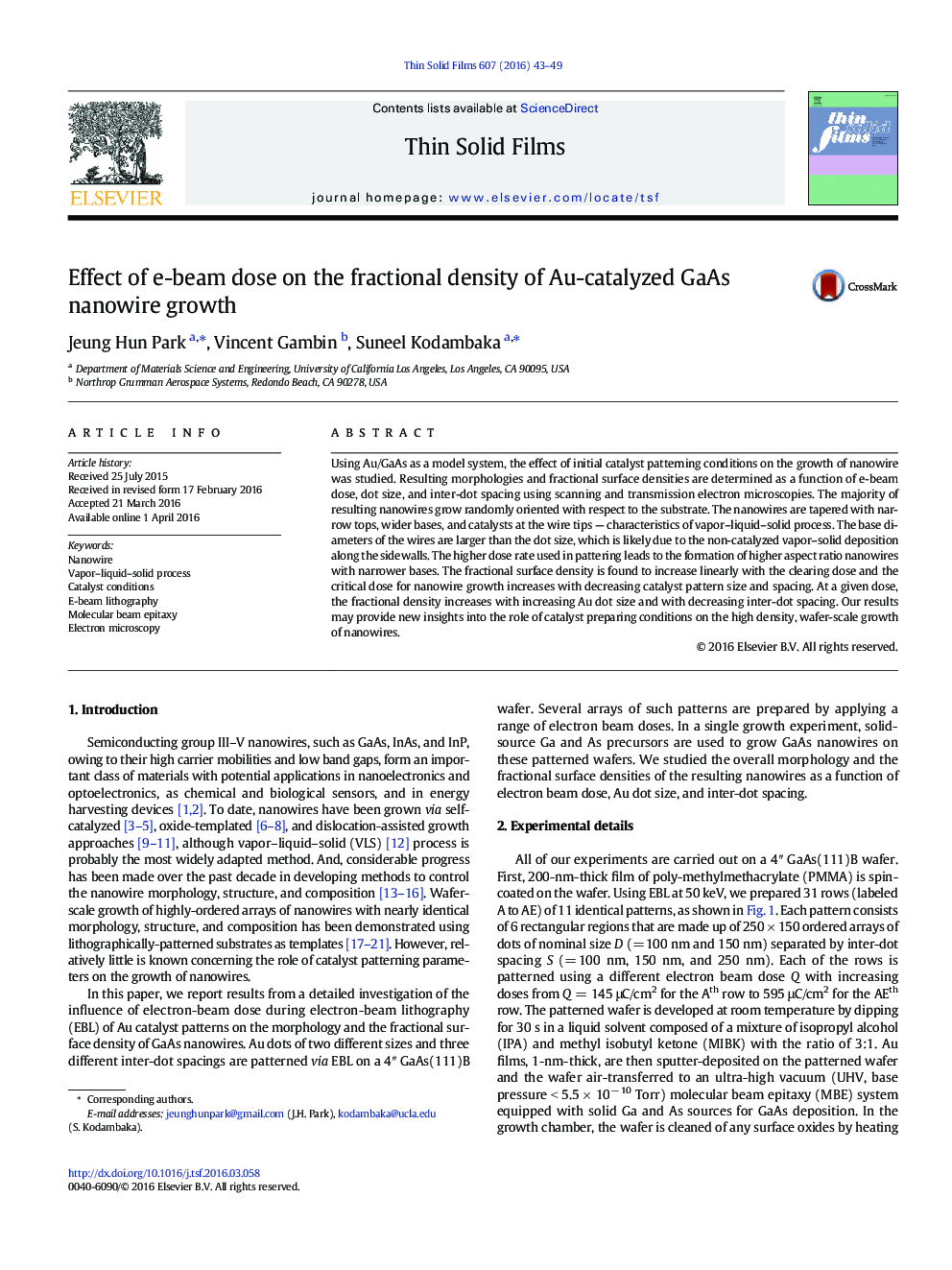| Article ID | Journal | Published Year | Pages | File Type |
|---|---|---|---|---|
| 1664009 | Thin Solid Films | 2016 | 7 Pages |
Abstract
Using Au/GaAs as a model system, the effect of initial catalyst patterning conditions on the growth of nanowire was studied. Resulting morphologies and fractional surface densities are determined as a function of e-beam dose, dot size, and inter-dot spacing using scanning and transmission electron microscopies. The majority of resulting nanowires grow randomly oriented with respect to the substrate. The nanowires are tapered with narrow tops, wider bases, and catalysts at the wire tips - characteristics of vapor-liquid-solid process. The base diameters of the wires are larger than the dot size, which is likely due to the non-catalyzed vapor-solid deposition along the sidewalls. The higher dose rate used in pattering leads to the formation of higher aspect ratio nanowires with narrower bases. The fractional surface density is found to increase linearly with the clearing dose and the critical dose for nanowire growth increases with decreasing catalyst pattern size and spacing. At a given dose, the fractional density increases with increasing Au dot size and with decreasing inter-dot spacing. Our results may provide new insights into the role of catalyst preparing conditions on the high density, wafer-scale growth of nanowires.
Related Topics
Physical Sciences and Engineering
Materials Science
Nanotechnology
Authors
Jeung Hun Park, Vincent Gambin, Suneel Kodambaka,
